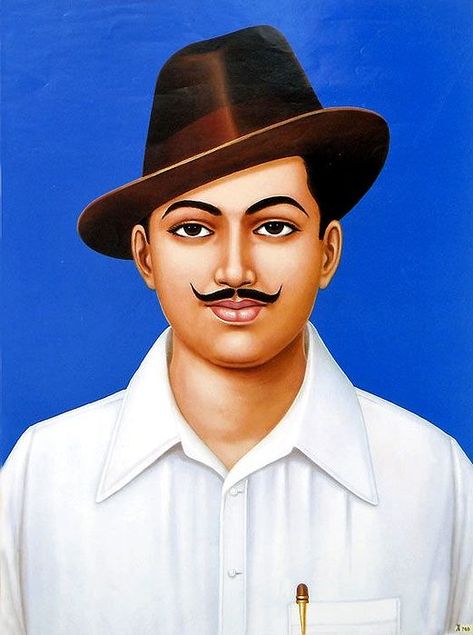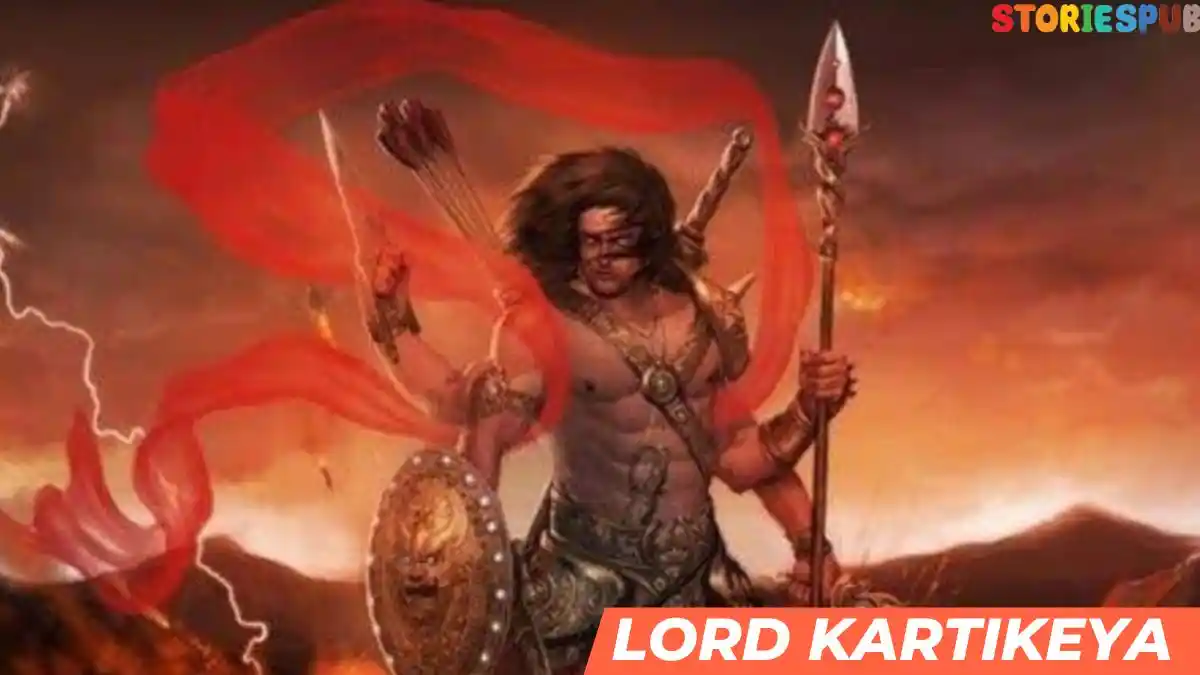Summarize this Article with:
Kumbhakarna Tale: Loyalty, Power, and Righteousness

Kumbhakarna is a prominent character from the ancient Indian epic, the Ramayana, which was written by the sage Valmiki. He is a giant, and the younger brother of Ravana, the ten-headed demon king of Lanka. Kumbhakarna is known for his great strength, loyalty, and an extraordinarily long slumber that lasts for six months at a stretch.
Kumbhakarna and Ravana were born to a sage named Vishrava and his wife Kaikesi, who belonged to the race of demons called Rakshasas. Vishrava was the son of the sage Pulastya, one of the ten Prajapatis created by Lord Brahma. Kaikesi, on the other hand, was the daughter of Sumali, the king of the Daityas (demons). Kumbhakarna had two brothers, Ravana and Vibhishana, and a sister named Shurpanakha.
Kumbhakarna was known for his immense strength, loyalty, and appetite. Despite his terrifying appearance, he was known to be wise and just. He had a deep sense of dharma and did not support Ravana’s decision to abduct Sita, the wife of Lord Rama. He tried to persuade Ravana to return Sita, but his advice went unheeded.
Kumbhakarna’s long slumber is a result of a divine curse. The story goes that he and his brothers performed a severe penance to please Lord Brahma, the creator of the universe. When Brahma appeared before them, Ravana and Vibhishana asked for invincibility and the power to govern the universe, respectively. Kumbhakarna, intending to ask for Indrasan (the throne of Lord Indra), mistakenly asked for Nidrasan (a bed for sleep) due to a mispronunciation caused by Goddess Saraswati. Brahma granted their wishes, but to save the world from Kumbhakarna’s havoc, he modified the request, making him sleep for six months at a stretch and remaining awake for only six days in between.
As the war between Rama’s army and Ravana’s forces ensued, Ravana was in dire need of Kumbhakarna’s strength. He ordered his soldiers to wake Kumbhakarna up, who was reluctant to fight for an unjust cause. However, his loyalty to his brother overcame his reservations, and he entered the battlefield. Despite his ferocious prowess, Kumbhakarna was eventually killed by Lord Rama.
Kumbhakarna Character
He is a giant Rakshasa (demon) with immense strength, terrifying appearance, and insatiable hunger. Despite his fearsome appearance, he possesses wisdom, a deep sense of dharma (righteousness), and loyalty. The following attributes further characterize Kumbhakarna:
- Strength: Kumbhakarna’s physical prowess is unparalleled in the epic. His great strength allows him to cause massive destruction on the battlefield, and his mere presence strikes fear in the hearts of his enemies.
- Loyalty: Kumbhakarna is deeply loyal to his family, especially his elder brother, Ravana. Even though he disapproves of Ravana’s decision to abduct Sita and advises him to return her to Rama, he still fights on his brother’s behalf when called upon.
- Wisdom: Despite being a Rakshasa, Kumbhakarna displays wisdom and a strong moral compass. He tries to persuade Ravana to follow the path of dharma, though his advice is ultimately ignored.
- Slumber: Kumbhakarna’s most defining characteristic is his long sleep, which lasts for six months at a stretch due to a divine curse. This slumber can be seen as both a strength and a weakness, as it provides him with rejuvenation, but also leaves him unavailable to support his brother during critical moments.
- Sense of Dharma: Kumbhakarna has a deep understanding of dharma, and he values justice and righteousness. He only enters the battlefield out of loyalty to his brother, despite his belief that Ravana’s actions are unjust.
- Bravery: Kumbhakarna’s willingness to enter the battlefield, even against his conscience, highlights his bravery. He faces insurmountable odds against Rama’s army but remains steadfast in his duty.
In conclusion, Kumbhakarna’s character is a fascinating mix of contradictions. He is both fearsome and wise, loyal and righteous, strong and vulnerable. His character serves as a reminder that wisdom, loyalty, and a sense of dharma should be guiding principles in one’s life.
How did Kumbhakarna get his name?
The name “Kumbhakarna” has its origins in the Sanskrit language and is derived from two words: “Kumbha” and “Karna.” The word “Kumbha” means “pot” or “vessel” in Sanskrit, while “Karna” refers to “ears.” Therefore, the name Kumbhakarna can be translated to mean “one with pot-like ears” or “one with large ears.”
The name reflects Kumbhakarna’s physical appearance, as he is a gigantic figure with large, pot-like ears. In the context of the Ramayana, his name serves to highlight his formidable and fearsome presence, distinguishing him from other characters in the epic tale.
Reasons for his slumber and the consequences of his awakening
Reasons for his slumber: Kumbhakarna, along with his brothers Ravana and Vibhishana, performed a severe penance to please Lord Brahma, the creator of the universe. When Brahma appeared before them, granting them a boon each, Ravana asked for invincibility and Vibhishana requested the power to govern the universe. Kumbhakarna intended to ask for “Indrasan” (the throne of Lord Indra) but mistakenly asked for “Nidrasan” (a bed for sleep) due to a mispronunciation caused by Goddess Saraswati, who intervened to prevent the giant from causing havoc upon the world. Brahma granted their wishes, but to limit Kumbhakarna’s destructive potential, he altered the request so that Kumbhakarna would sleep for six months at a stretch and remain awake for only six days in between.
Consequences of his awakening: When Kumbhakarna awoke from his slumber, he would consume vast amounts of food to satiate his hunger. His awakening often coincided with significant events in the story of the Ramayana. The most notable consequence of his awakening was during the war between Rama’s army and Ravana’s forces.
Ravana, desperate for his powerful brother’s help, ordered his soldiers to wake Kumbhakarna. Although Kumbhakarna disagreed with Ravana’s decision to abduct Sita, his loyalty to his brother prevailed, and he entered the battlefield to fight against Rama’s army.
His awakening had several consequences:
- The mere presence of the gigantic Kumbhakarna on the battlefield instilled fear in the hearts of Rama’s soldiers, boosting the morale of Ravana’s forces.
- Kumbhakarna’s enormous strength and ferocity caused extensive destruction and casualties in Rama’s army.
- Despite his significant contributions to Ravana’s forces, Kumbhakarna’s awakening ultimately led to his death at the hands of Lord Rama.
Kumbhakarna Power
- Immense Strength: Kumbhakarna was renowned for his incredible physical strength, which allowed him to cause significant destruction and defeat numerous enemies on the battlefield with ease. His great strength made him one of the most powerful warriors in the Ramayana.
- Gigantic Size: Kumbhakarna was a giant who towered over other characters in the Ramayana. His enormous size amplified his strength and made him an intimidating presence in battle, instilling fear in the hearts of his adversaries.
- Endurance: As a Rakshasa, Kumbhakarna possessed incredible endurance and resilience, enabling him to withstand substantial damage in combat. His high tolerance for pain allowed him to continue fighting even after sustaining severe injuries.
- Invulnerability to Ordinary Weapons: Kumbhakarna’s body was resistant to conventional weapons, as they could not harm him significantly. This resistance made him nearly invincible against most opponents, leaving them with limited options for defeating him.
- Regenerative Abilities: Like many other Rakshasas, Kumbhakarna could regenerate from injuries quickly, making it difficult for enemies to incapacitate or defeat him in battle.
- Supernatural Powers: As a Rakshasa, Kumbhakarna had access to various supernatural powers, which could include shape-shifting, casting illusions, and other magical abilities. These powers augmented his already formidable presence on the battlefield and made him a challenging opponent for even the most skilled warriors.
How did Kumbhakarna die?
Kumbhakarna’s death occurred during the climactic battle between Lord Rama’s army and Ravana’s forces in the Indian epic, the Ramayana. Despite disagreeing with Ravana’s decision to abduct Sita and advising him to return her to Rama, Kumbhakarna chose to fight for his brother out of loyalty when he was awakened from his long slumber.
As Kumbhakarna entered the battlefield, his immense size, strength, and supernatural powers struck fear into the hearts of Rama’s soldiers. He fought valiantly, causing significant destruction and casualties in Rama’s army.
However, Lord Rama, an incarnation of Lord Vishnu, was a skilled and powerful warrior. Recognizing Kumbhakarna as a formidable adversary, Rama engaged him in a fierce battle. Rama strategically targeted Kumbhakarna’s vital points using divine celestial weapons, gradually weakening the giant Rakshasa.
Eventually, Rama used a powerful divine arrow to decapitate Kumbhakarna, killing him and bringing an end to his reign of terror on the battlefield. Kumbhakarna’s death was a turning point in the war, as it demonstrated the triumph of righteousness over brute force and paved the way for Rama’s ultimate victory over Ravana.
Conclusion and lesson from the story
The story of Kumbhakarna in the Ramayana serves as a cautionary tale with several key lessons and conclusions that can be drawn from his life and actions:
- Importance of righteous action: Kumbhakarna’s disagreement with Ravana’s actions and his attempts to persuade Ravana to follow the path of dharma emphasize the importance of making morally upright decisions in one’s life.
- Loyalty and its consequences: Kumbhakarna’s unwavering loyalty to his brother Ravana, despite disagreeing with his actions, led him to fight against Rama’s army. The story shows that while loyalty is a valuable trait, blind loyalty can have severe consequences.
- The power of choice: Kumbhakarna’s request for a boon from Lord Brahma serves as a reminder to think carefully about our choices and their consequences. Even a small mistake or miscommunication, as seen in Kumbhakarna’s case, can lead to significant and lasting repercussions.
- The triumph of good over evil: Kumbhakarna’s death at the hands of Lord Rama illustrates that righteousness and virtue will ultimately prevail over injustice and brute force.
- The significance of wisdom: Despite his immense strength and power, Kumbhakarna’s end highlights the importance of wisdom, righteousness, and moral guidance. It teaches us that mere physical prowess is not enough for success or victory, and that cultivating wisdom and ethical values is essential.
In conclusion, the story of Kumbhakarna imparts valuable lessons about loyalty, wisdom, the importance of righteous action, and the consequences of our choices. These lessons serve as timeless reminders for leading a life guided by morality and virtue, as well as a warning against blind loyalty and the dangers of unbridled power.
Kumbhakarna FAQ
Who is Kumbhakarna in the Ramayana?
Kumbhakarna is a giant Rakshasa (demon) and the younger brother of Ravana, the ten-headed demon king of Lanka. He is known for his immense strength, wisdom, and loyalty to his brother, as well as his unusually long slumber.
How did Kumbhakarna get his name?
Kumbhakarna's name is derived from two Sanskrit words: "Kumbha," meaning "pot" or "vessel," and "Karna," meaning "ears." His name, which translates to "one with pot-like ears" or "one with large ears," reflects his physical appearance as a giant with large ears.
What is the story behind Kumbhakarna's prolonged slumber?
Kumbhakarna's long slumber is due to a divine curse, which resulted from a mispronunciation during a boon request from Lord Brahma. Instead of asking for "Indrasan" (the throne of Lord Indra), he mistakenly asked for "Nidrasan" (a bed for sleep). Brahma granted his wish, and Kumbhakarna was cursed to sleep for six months at a time, waking for only six days in between.
What powers did Kumbhakarna possess?
Kumbhakarna possessed immense strength, gigantic size, extraordinary endurance, invulnerability to ordinary weapons, regenerative abilities, and various supernatural powers such as shape-shifting and casting illusions.
How is Kumbhakarna related to Ravana?
Kumbhakarna is the younger brother of Ravana. They share the same parents, the sage Vishrava and the demon princess Kaikesi.
Did Kumbhakarna support Ravana's abduction of Sita?
No, Kumbhakarna disapproved of Ravana's decision to abduct Sita and advised him to return her to Rama. However, he chose to fight for his brother out of loyalty when called upon during the war.
How did Kumbhakarna die?
Kumbhakarna was killed by Lord Rama during the battle between Rama's army and Ravana's forces. Rama strategically targeted Kumbhakarna's vital points using divine celestial weapons, ultimately decapitating him with a powerful divine arrow.
What is the moral lesson from Kumbhakarna's story?
The story of Kumbhakarna teaches the importance of loyalty, wisdom, and righteous action. It also serves as a cautionary tale about the consequences of our choices and the dangers of blind loyalty and unbridled power.
Who wrote the Ramayana?
The Ramayana was written by the sage Valmiki, an ancient Indian poet and author.
Who are Kumbhakarna's siblings?
Kumbhakarna has two brothers, Ravana and Vibhishana, and a sister named Shurpanakha. All of them are significant characters in the Ramayana.
Hey kids, how much did you like The Kumbhakarna Tale? Please share your view in the comment box. Also, please share this story with your friends on social media so they can also enjoy it, and for more such Hindu Mythology, , please bookmark storiespub.com.
Check out other stories that we have:
- 1. Lord Ganesha
- 2. Bhagavad Gita
- 3. Mahabharat
- 4. Tale of Jalandhar
- 5. Story of Prahlad
- 6. Rani Padmini













